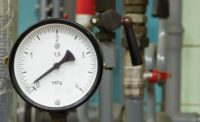Cheney, Washington, is the home of the Eastern Washington University Eagles, the bright red Roos Football field, and the Rozell Plant. The Rozell Plant was brought online in 1970, providing 100-psig, high-pressure steam throughout the campus via four miles of underground tunnels. The EWU team has utilized state-of-the-art technologies to reduce emissions and increase efficiencies as it optimizes the plant. The Rozell Plant has five industrial watertube steam boilers, and the team has focused on the four pillars of boiler plant optimization, including reliability, safety, efficiency, and sustainability, which is also having a positive impact on decarbonization by the university in reducing fuel usage and lowering emissions.

Modernization of Boiler Controls
In 2019, obsolete controls and diminished control support left the university in a position where component failure would have resulted in significant and catastrophic downtime consequences. Based on the overall boiler condition and available life span of the equipment, four out of the five boilers were selected to be modernized with new advanced boiler control systems that utilize the CB Hawk 4500. The advanced boiler control systems have a PLC platform and touchscreen for ease of operation with integrated “parallel-positioning” and “oxygen trim” systems. The parallel-positioning burner control system increased the boiler’s efficiency by precisely controlling the combustion curve from low fire to high fire and accurately maintaining the optimal fuel-to-air ratio of the burner’s flame.

The “oxygen trim” system automatically adjusts the fuel-to-air ratio of the flame by correcting the excess air amount to compensate for any barometric changes. This keeps each burner’s efficiency dialed in no matter what the outside weather conditions bring.
The controls modernization was rounded out by including the Cleaver-Brooks ADAC and Hawk Host Panel.

The ADAC is a PLC-based deaerator and surge tank control system designed to optimize the delivery of feedwater to the boiler, ensuring steam reliability and higher operating efficiency. It monitors and controls all points on the deaerator and surge tank, including tank level, pressure, pump speed, and pump lead-lag.
The C-B host panel is the system interface between each individual boiler’s control system and other boiler room equipment, such as the ADAC and Hawk controls, as well as an interface for a building supervisory control and data acquisition (SCADA) system.

Boiler sequencing and equipment communications have been integrated into the Cleaver-Brooks plant’s SCADA system, which is monitored 24/7/365 by two-man crews on a rotating shift. The EWU boiler operations team is led by Matt Deppa, chief engineer, and Kevin Beckwith, assistant chief engineer, who keep the units well maintained.
“The steam system is critical to the university for the supply of heat and hot water to most campus buildings connected through about a four-mile tunnel loop,” said Beckwith. “The campus has only been without steam for an extended duration twice since 1970. So, with this being said, the updating of equipment and replacement of the boilers to the modern technology is very important.”
Boiler data and data from the deaerator/feedwater system is all accessible from the SCADA system. The team has been trained on boiler operations to maximize performance and safety.
Continued Improvements
The next phase of total steam plant optimization was replacing the old No. 3 boiler with a new modern low-emission boiler with a high-efficiency heat recovery flue gas feedwater economizer. The low-emission burner design reduces the formation of NOx in the combustion gases, and the heat recovery economizer captures the Btu lost in the stack system and transfers those Btu by increasing the incoming feedwater temperature.

“The upgrade to the new Hawk CB controls has made the operation much more efficient, safe, and very smooth to operate,” said Beckwith. “Now, with the addition of the new No. 3 boiler about to come online, we will see more added efficiency.”
The Future
Boiler plant optimization focuses on reliability, safety, efficiency, and sustainability and is an ongoing process. The total steam capacity of this plant exceeds 100,000 pounds per hour. The Rozell Plant team is continuing to look ahead and use a master plan to develop the next steps to make improvements while realizing the overall decarbonization benefits. Having the plan puts them in a proactive mindset, which helps them steer clear of potential reactive issues. Utilization of a smaller capacity pony boiler is being evaluated to maximize the system’s fuel-to-steam efficiency during the lower load months in the summer season.
By Steve Farnes, boiler optimization specialist with Cole Industrial




